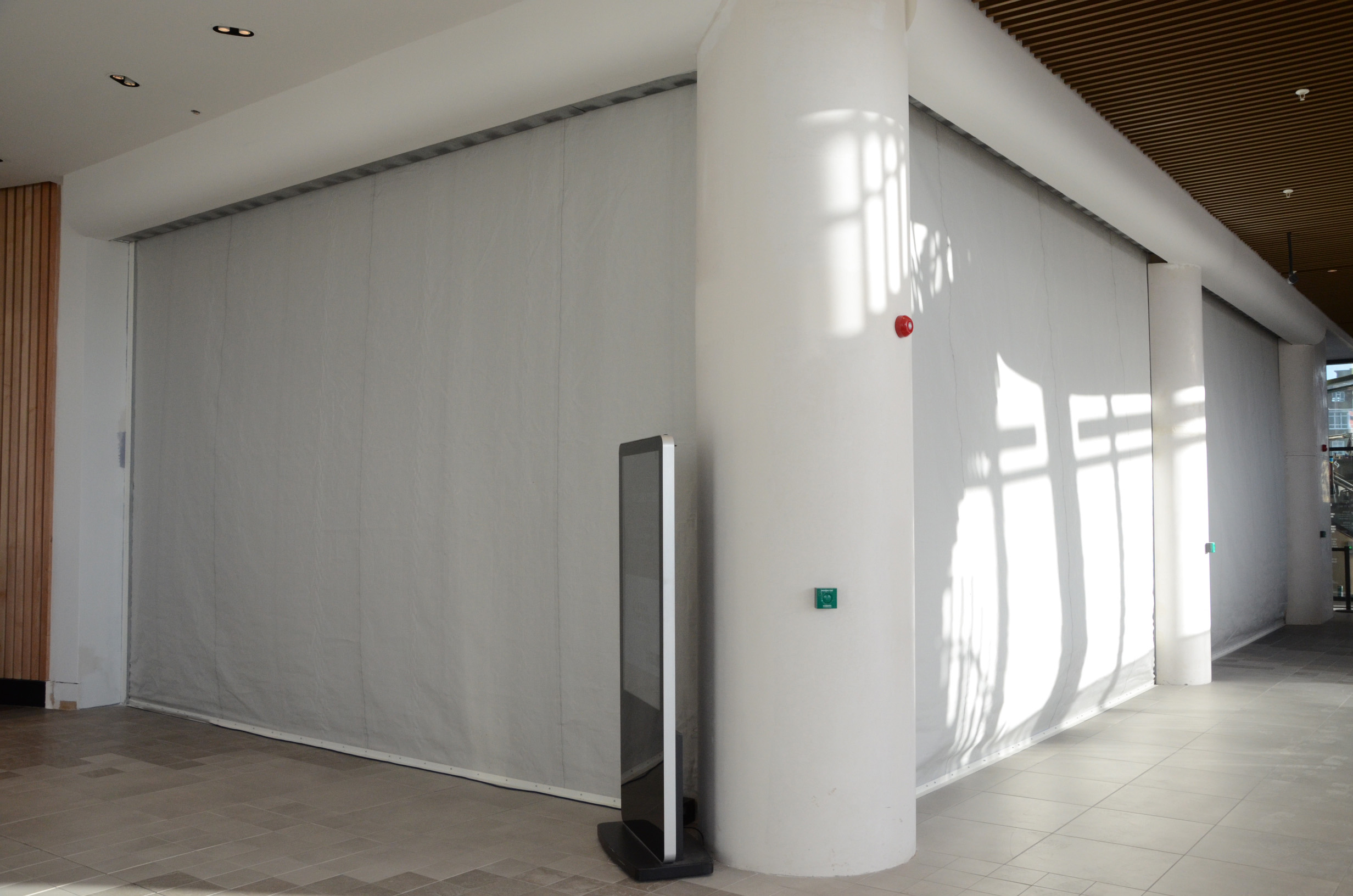Technical Guidance Document 21 clearly identifies the limited applications when BS EN 16034 can be used in the UK but goes on to state that the ASFP also recommends that in these limited occasions, where the use of a CE Marked fire curtain product is mandated, this should still be augmented with certification to BS 8524-1 and BS 8524-2.
DOWNLOAD ASFP TGD 21
There is a lot of misinformation being shared in the market about BS 8524 and the CE Marking of fire curtains, principally from resellers of products from European manufacturers, whose products are unable to meet the robust requirements of BS 8524. The document released by the ASFP explores this issue and clearly recommends what should be used in certain applications.
BS 8524 was developed due to the high demands of UK Building Control Officers, as well as to satisfy building code and regulations, which sought a robust and rigorous British Standard for fire curtains.
An example of this demand is that Building Control wanted assurances to know that, if a fire curtain is tested once a week for several years, as is recommended, would the deterioration of the fabric, caused by this cycling, mean the curtain performs in the same way and offer the same level of protection in a fire, to when it was originally tested or not? This is why a fire curtain needs to be cycle tested 500 times before the fire test, which is part of the test criteria for BS 8524-1. This is not a requirement in Europe and why a cycle test prior to a fire test is not required as part of BS EN 16034, which makes it fundamentally less safe than BS 8524.
BS 8524-1 specifically deals with the performance and testing of active fire curtain barrier assemblies, and it provides comprehensive guidelines and testing procedures for fire curtains, addressing their specific functionality and operation. This includes an important hot motor operation test which proves that the motor operating the fire curtain will continue to function at elevated temperatures. The temperature at the top of the ceiling in a fire, which may be in a ceiling void, can be very different from the temperature at the bottom of the curtain, where people are evacuating, or the fire service are trying to gain access. The ability of the motor to function at this temperature is essential for this reason.
These tests, along with other required performance characteristics, ensure that a BS 8524-1 compliant product continues to be the most suitable standard for an active fire curtain.

The BS 8524-1 certification scheme is currently in a transition phase with a number of UKAS approved notified bodies in the process of seeking final approval from UKAS for a new scheme. Further news of this will come shortly. This transition stage does not make the standard irrelevant or defunct.
BS EN 16034 fire curtains only need to be CE Marked to comply with Construction Product Regulations when being used as a door to allow personal access / egress to a retail’s premises. This is a very limited and rare application as the majority of fire curtains are not used as a door. So, for all other applications of fire curtains a CE Marked product is not suitable or required. Further information on this can be read in the Technical Guidance Document 21.
BS EN 16034 and BS 8524 are both European standards that relate to the fire performance of building products and systems. However, they serve different purposes and are applicable to different types of fire safety products.
While BS EN 16034 is a valuable standard for evaluating the fire resistance of door and shutter assemblies, it should not be used as the sole basis for specifying fire curtains. Fire curtains have unique characteristics and functions that require specific testing and certification. BS 8524 was developed for fire curtains for specific reasons, making it the appropriate standard to use when specifying fire curtains to ensure they meet the necessary performance and fire safety requirements.
DOWNLOAD ASFP TGD 21
The Technical Guidance Document 21 can also be downloaded via the ASFP website here: https://asfp.org.uk/page/Publicationslist



